Types and recommendations for choosing toothbrushes for dogs

Cleaning your dog's mouth from dental plaque is one of the most important elements of pet care. An adult dog needs this procedure once or twice a week to prevent dental diseases. However, not every pet owner considers this necessary. Even fewer owners know how to do it right.
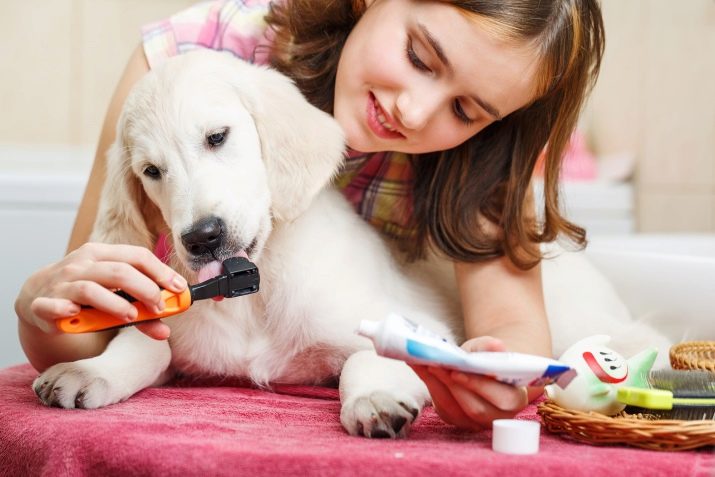
rules
As with everything else, it is necessary to train a dog to brush its teeth from puppyhood. Milk teeth for permanent change in the period from four to six months from the date of birth. By this time, you need to develop a habit of brushing your puppy's teeth. The most favorable moment for this is the evening: by this moment the baby has already eaten, is running over and tired. This means that he will tolerate the procedure much more calmly.
Before starting the process, the dog should be familiar with the paste and brush to understand that these things are not dangerous. Usually, dental products for animals smell good or odorless.
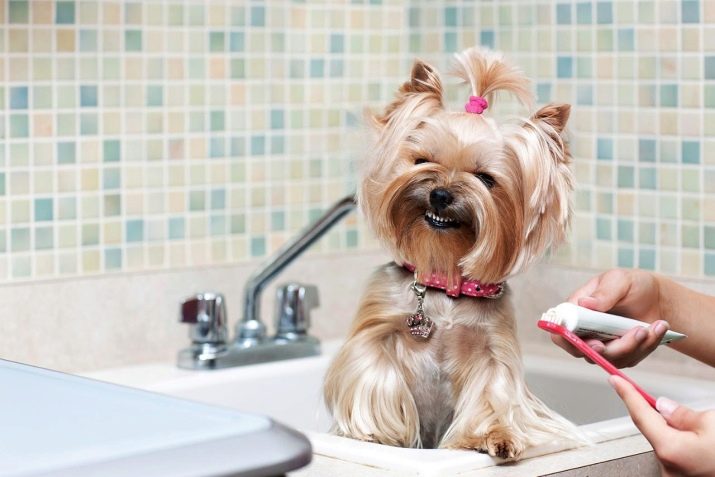
The procedure must be attended by two people. The first holds the dog in his arms, and the second cleans.
In the process, you need to communicate with the puppy, caress him, praise him for good behavior.
The first cleaning procedure can be carried out without a toothbrush, simply by squeezing the paste onto your finger and gently brushing your teeth. It needs to be done every day, gradually increasing the time of the process.
You don't have to try brushing all your teeth in one go. It is necessary to accustom your pet to such a ritual gradually, covering an increasing number of teeth, until it becomes a habit. After completing hygiene procedures, give your four-legged friend water.
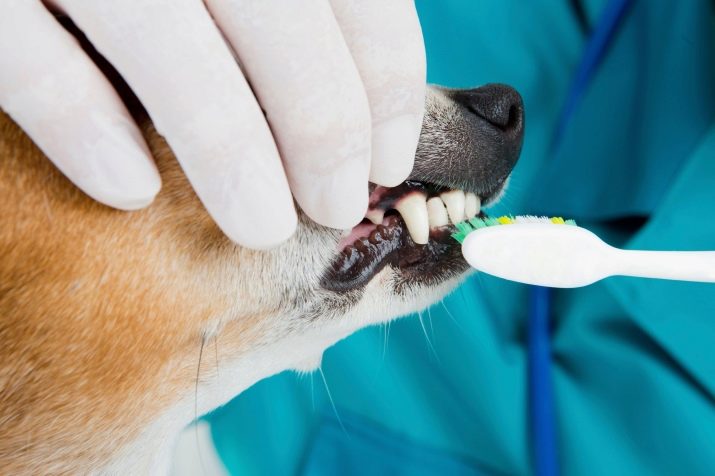
Toothbrush options
In any zoological store there are several samples of animal brushes. They come in a variety of shapes and sizes.
- Extended handle brushes even the teeth that are deep in the mouth can be reached. At the ends of the product there are bristles of various sizes.
- Tripartite pattern looks like a wide handle with three flexible tips. It cleans teeth efficiently from all sides.
- The fingertip is made of silicone... He has very thin and soft bristles that massage the gums and penetrate into all the gaps between the teeth.
- Electric - Powered by batteries or rechargeable batteries and cleans canines just like a human. To prevent the dog from being electrocuted and breaking the device, it is worth using an electric toothbrush after the animal gets used to the process of cleaning the oral cavity.

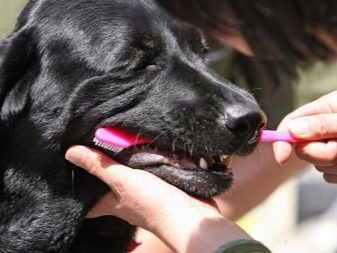
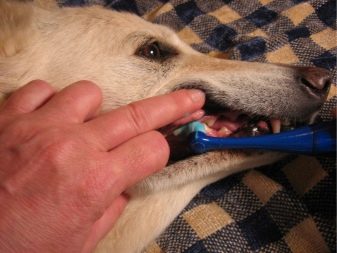
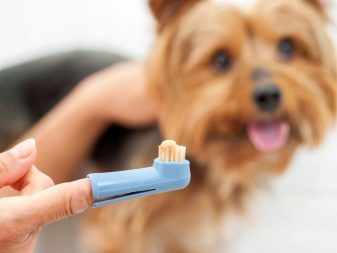
There is also a so-called liquid toothbrush - this is a universal method of cleaning an animal's oral cavity.
This tool completely removes the undesirable sensations of four-legged pets from the process, as it is simply added to the water and cleans the teeth while drinking. It is suitable for dogs of any breed and age.
How to choose?
When buying a brush, you should pay attention to the size of your pet. For small dog breeds, it is better to purchase not a human, but a special brush for caring for the animal's oral cavity. For large breeds, a medium-hard human brush may also work.
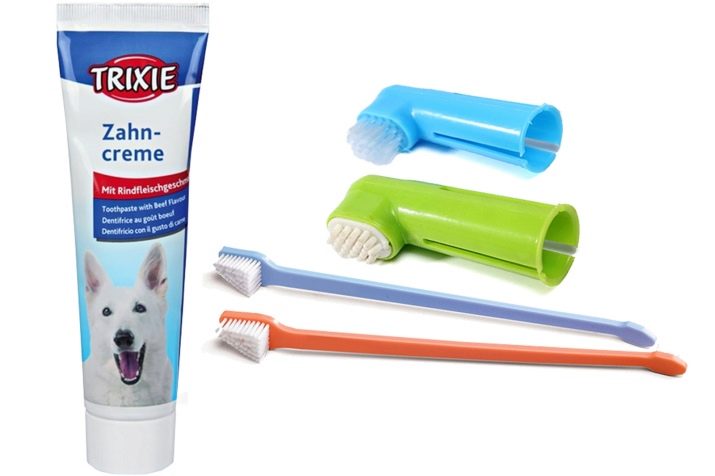
When caring for the tooth surface, the product should not cause inconvenience to both the animal and the owner.
Otherwise, the dog will feel fear, and the process will turn into a painful event.
Criteria:
- when making a choice, one should take into account the size, shape, angle at which the brush head is located;
- the bristles on the brush should be soft so that the gums are not irritated, but the teeth are cleaned efficiently;
- you need to focus on the sensitivity of your pet's gums and, based on this, choose the hardness of the brush.
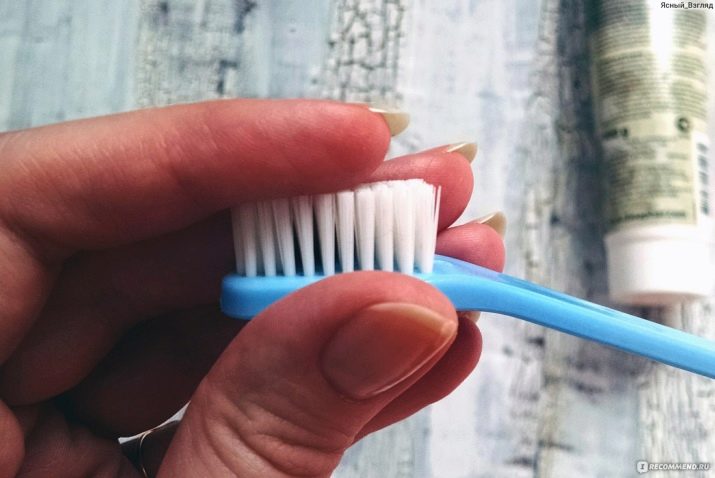
Storage conditions
The service life of the brush for large and small breed dogs is approximately five months. Usually, the owner himself will notice the deterioration of the cleaning device. It is also imperative to replace the toothbrush that was used during the pet's illness - pathogenic bacteria may remain on it.
After cleaning the oral cavity, the brush should be rinsed in warm water and placed in a dry place. It is strictly forbidden to store human and canine hygiene items together.
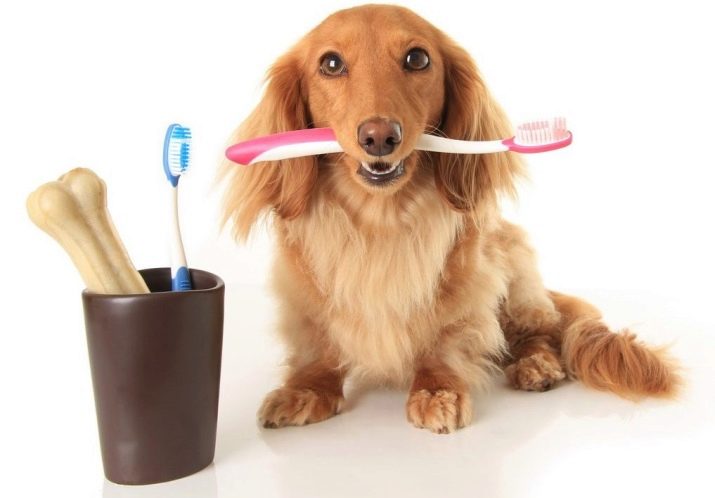
Brushing your teeth with ultrasound
If the pet owner does not pay attention to the condition of his pet's teeth, then plaque can appear quite quickly. It will not work to remove it with a paste with a brush - you will need the help of a veterinarian-dentist.
In order for the teeth to become clean and white, you will need a special procedure in a veterinary clinic - teeth cleaning with ultrasound.
It is performed under light anesthesia. This is required in order to calmly carry out the cleaning.

Otherwise, the dog may show aggression or be frightened, will not lie still and wait for the end of cleaning. There is no need to specially prepare your pet, you just don’t need to feed the dog several hours before the procedure.
Ultrasonic cleaning should not be carried out too often, ideally once a year. At other times, the owner is obliged to monitor the condition of the dog's teeth with a brush and paste.
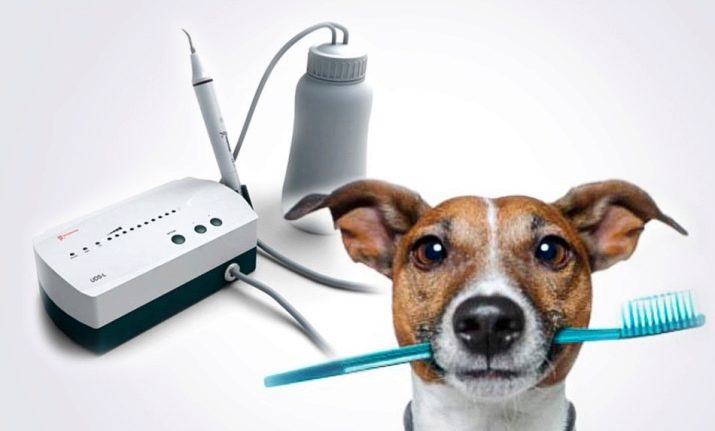
For information on how to properly brush your dog's teeth at home, see below.

































